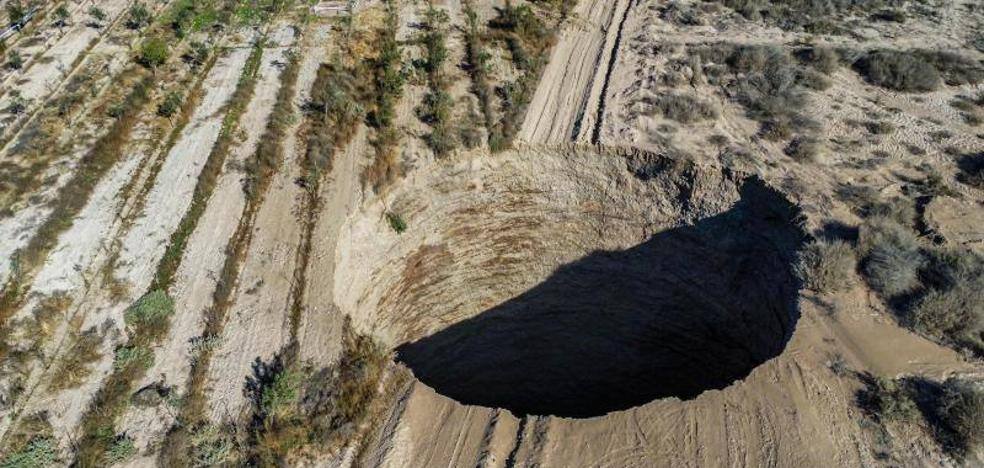Hundreds of residents struggle to survive in the devastated city for eight months as authorities find three torture chambers and the first clandestine burials
The beginning of the Kherson invasion was especially unbearable for Dmitro. He smoked in the window of his house. At the end of the street was a Russian patrol. Suddenly a grenade fell out of nowhere. It hit close to a soldier. His remains filled the walls. A few weeks later, Dmitro explained to an online newspaper: “In the beginning it was quite difficult to see the bodies in the street. Soldiers, civilians… But by now you become completely indifferent; no more or less than when you see a dead cat. A doubt tormented him: “Will we still be humans when this is over?”
Behind the joy unleashed by the entry of Ukrainian troops into the recently recaptured city, question lingers in the air. The citizens of Kherson have fallen victim to an extreme war lab. They endured the longest occupation of any major city invaded by Moscow. Just as in other small enclaves the Russians closed off the periphery and barely entered the cities, here they installed a powerful machine of terror and pain that has swallowed an undetermined, but large number of disappeared people. Kherson has become the city of loneliness, tragedy and gloomy faces.
The first neighborhood testimonies speak of systematic identification and house searches on the street or in houses. From the fear of ending up in a prison in Crimea. The inhabitants were forbidden to speak Ukrainian. Moscow sent Russian textbooks to schools. Many in the early days burned any magazine or document that was supposed to have anything to do with the Ukrainian government or army. First there was food. Then everything was arranged: food, water and medicines. Eight months. Igor recalls how in mid-February he listened with a certain nonchalance to the news about the maneuvers of the Kremlin army on the other side of the border, convinced that the tanks would never cross the line, and suddenly, in March, an explosion a soldier on the same street where he lives.
The city had 290,000 inhabitants. Today there are barely 50,000 left. The rest have been deported to Russia or joined the troops who crossed the other side of the Dnieper last week. In Kherson, there are families who carry their luggage because they don’t know where they will end up that day, children who play next to bullet-riddled fences, and families who go to the river every day to get water for their needs and for the to save money, clean up the small potable supply left by the invaders after destroying the pipes. They also remain resistant who do not stop waving the national flag.
Irina does not believe that all those who went with the occupation forces are “traitors”. “I’m sure there are people who have left for fear of dying of hunger or cold.” However, not everyone shares the opinion. A neighbor from the evacuated region complains that there are still many “supporters of the ‘Russian peace’ in the village and no one touches them.” It refers to employees from Moscow. The 800 officers the Ukrainian police have deployed to Kherson and 12 other recaptured towns are investigating at least 65 people accused of aiding the invaders. Five are municipal officials accused of forcing their neighbors to apply for Russian passports. Two informants are handcuffed to traffic lights with belts for public ridicule. Like the looter caught stealing food and tied to a tree on Monday, wrapped in packing tape. They pulled down his pants so that any citizens who wanted to could beat him.
The neighbor is not completely satisfied with the investigations or the punishments. Regrets that many collaborators managed to flee to occupied territory. “They took away those who held referendums and those who fed the occupiers. Nobody does anything to them.”
The city is divided between those celebrating the reconquest and the ghosts. The latter come to the soldiers asking them to look for husbands, fathers and children who have been engulfed in the darkness of the occupation for the past eight months. Fear has melted into the skin. There is no real number of young and old people who have been dragged from their environment and have not returned. About 600 will be missing before the summer. But that was many months ago. Some families believe that their imprisoned relatives will have been transferred to prisons in other Russian-dominated regions. The military hopes to find clandestine cemeteries. They’ve seen it before. Some sources assured this Tuesday that the first bodies of civilians and soldiers who lost their lives when the Muscovite army entered the oblast have been found. Interior Minister Denys Monastyrskyi announced last night that “as in other regions, we encountered places where civilians were tortured. Now they have also started to find places where they were buried. The minister added that excavations have already begun and are being carried out by forensic experts and experts who have worked in other communal graves.
The soldiers have begun the painful task of checking basements and buildings that residents identify as torture chambers. Three have already been found. “We have evidence, testimonials from citizens, that our people were probably detained and tortured there,” said the head of the national police, Igor Klymenko. It was not difficult for them to know in which buildings people were being electrocuted. The detained Ukrainians came handcuffed and hooded. The screaming was also revealing. The screaming is sincere. According to the Kiev media, there was a fight during all these trials. The executioners, who sometimes came to the interrogations with a hand grenade, acted for various reasons: to obtain information about the Ukrainian military positions, to press collaborators or for pure pleasure, especially when they stripped and discovered the men in the street that they had tattoos similar to those of the National Army. “If there was hell on earth, it was here,” Serhiy, 48, told The Washington Post, referring to a low-rise concrete building next to his house.
Igor, 54, a shoe dealer, was in one of those rooms. He tells the press that he was “tortured for two weeks. They used pliers to twist my hands, they beat my head and genitals with a club,” he says. Other testimonies published by newspapers refer to medieval punishments. Broken bones. Choking. electrodes. Summary executions. Igor was seriously injured. released him, they demanded that he become an informant under the threat of spreading Russian propaganda on his social profiles so that everyone would consider him a traitor. It was not just about inflicting pain. Humiliation sometimes hurts as much as a sledgehammer.
Source: La Verdad
I am an experienced and passionate journalist with a strong track record in news website reporting. I specialize in technology coverage, breaking stories on the latest developments and trends from around the world. Working for Today Times Live has given me the opportunity to write thought-provoking pieces that have caught the attention of many readers.



